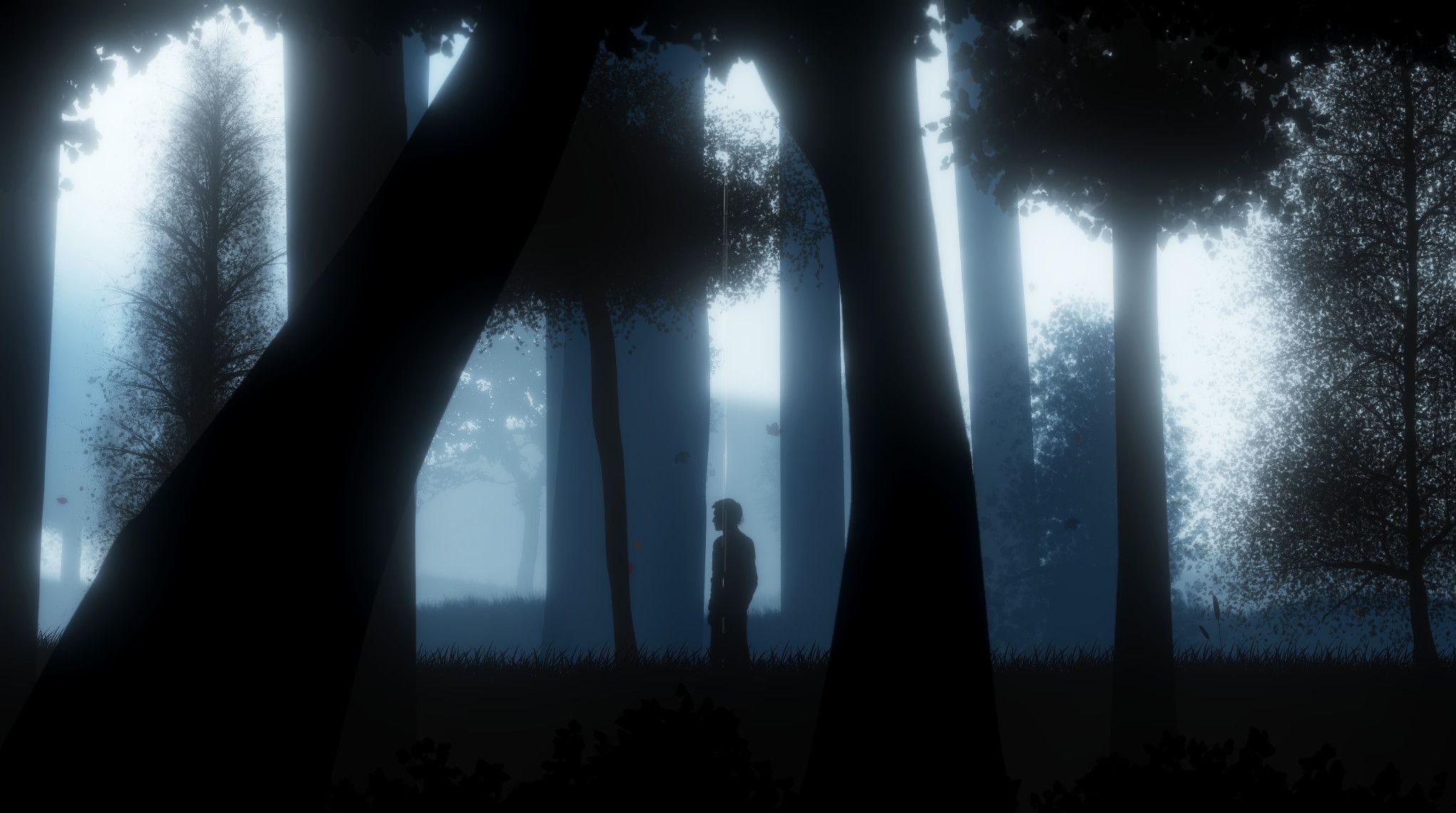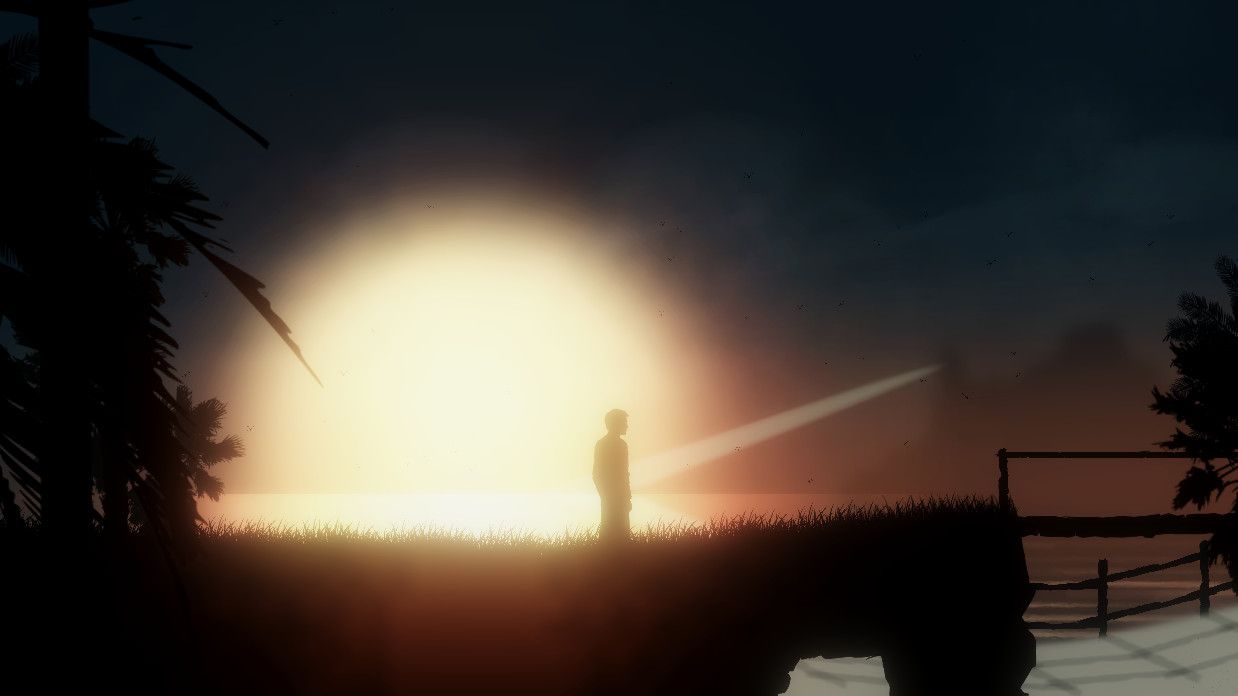It's been clear from the moment the trailer for the indie 2D adventure game Into A Dream dropped that developer Filipe Thomaz had a story to tell about humanity, relationships and life itself. Players take on the role of John Stevens, a man who wakes up to find himself in a dark but not unpleasant forest without his memories. He is instructed by communication on an old cassette tape to find a man named Luke Williams who is struggling with depression and travel through his dreams to learn his story and help keep him from fading away. Players will need to help John solve a series of puzzles to cross breathtaking landscapes and unravel the story of Luke's life.
The premise, while simple, is enhanced by Into A Dream's dialogue and the realistic character interactions. The characterization relies almost entirely on voice acting, as John and Luke, along with all the other characters, are silhouettes whose faces the players do not see during gameplay. This gives the player a chance to project themselves onto not only the protagonist reaching out to a person in need, but also onto Luke and his mental and emotional turmoil, and his wife and daughter, who are trying to get through to him. Unfortunately, the gameplay mechanics can become frustrating and almost feel out of place within such a sophisticated narrative. Thankfully, the story elements are so strong, it should be easy for players to forgive some of the more frustrating aspects of gameplay.
While the story is the strongest element in a game full of strong and emotional elements, there is much to enjoy about this game. The voice acting for the main characters is spot-on and haunting, forcing the player to face and feel difficult emotions despite never seeing a single character's face or expressions.
The art style is unique, comprised mainly of silhouettes and shadows with the occasional use of colorful lighting to create a dramatic effect. The symbolism is apparent, but not overstated, with a use and reuse of symbolic imagery that mimics the feeling of poetry. The game could have easily been a visual novel. Accompanying the game is a beautiful, sweeping and relaxing score that grabs attention not for being too overpowering, but rather for being enjoyable.
The puzzles appear to have been an issue from the start of the project, based on critiques of the initial demo. To progress the game, which exists on a single plane and only allows players to move left or right, John will need to complete puzzles to close gaps in the scenery and avoid falling into water or off a cliff. Some puzzles are fairly straightforward, if not a bit challenging, with a great, unobtrusive tutorial provided to get players accustomed to the controls.
However, several of the puzzles, including a conspicuous rope chain, are less puzzling and more tedious. In this particular instance, the player will need to have John jump and grab a hanging chain. He will need to pump his legs as though on a swing, with the player in control of the timing of each leg motion, to propel the chain forward by centimetres across a long bar over a ravine. Far from operating like a video game zipline, the chain moves frustratingly slowly, and players have no choice but to stare at John, now a human pendulum, as he slowly crosses the water.
Mechanics like these grind the story to a halt and break the player's immersion. They also feel out of place with the rest of the story, at once too whimsical to feel real or necessary and too realistic to feel like part of a dream. While gameplay elements are obviously important, the game may have benefited more from a strictly choice-based mechanic, where what John chooses to do and say propels the narrative forward rather than navigation-based puzzles.
There is so much to like about Into A Dream, and the overall experience is a compelling, heart-wrenching look at interpersonal relationships, mental illness and connection. At a time when so many in the world are feeling understandably out of control, isolated and disconnected, Into A Dream is a welcome reminder of the beauty of compassion and empathy.
Into A Dream is available for PC. A Steam code was provided to Screen Rant for review purposes.



